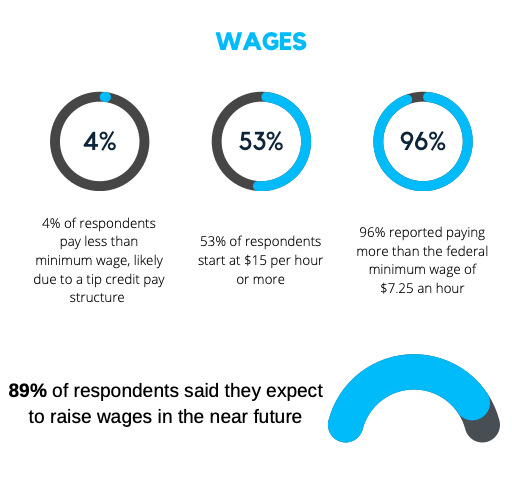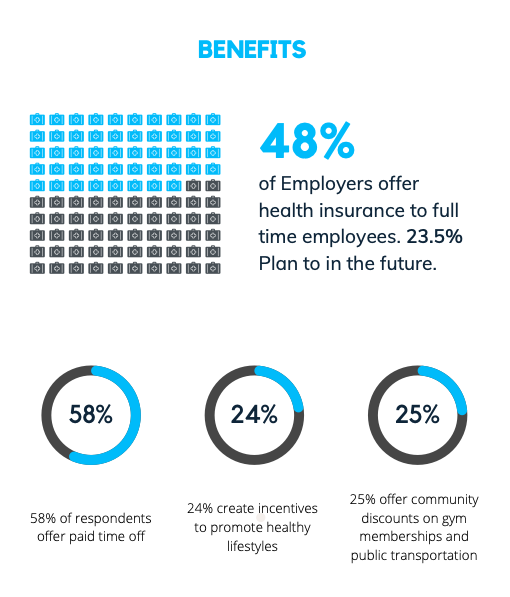In a survey, we asked posters to tell us how they contribute to better work conditions. Here are the results.
From the death of Anthony Bourdain to the #MeToo movement — a national discussion began to take place, exposing the all too common, challenging work conditions of many restaurant workers. Chefs, Restaurateurs, activists, and industry workers across the nation have spoken out about what needs to change, creating a pivotal point in the future of our industry. In a recent survey sent to employers across the nation, we asked what’s improved and what they’re doing to create better work environments for their employees. The restaurant industry still has so much work to do, but together we are repairing the system – and it’s showing.
Low wages in the restaurant industry spurred the fight to increase the federal minimum wage to $15 almost a decade ago. While the Biden Administration has shown support for increasing the federal minimum wage, it likely won’t happen at a national level any time soon. It’s up to local governments and individual businesses to raise wages, which is precisely what we see happening.
When we asked employers about starting wages, 96% reported paying more than the federal minimum wage of $7.25, and 53% start at $15 or more. Only 4% of respondents pay less than the federal minimum wage, likely due to a tip credit pay structure. More employers are increasing pay to stay competitive and improve employee retention — creating competition and pushing others to raise starting wages above the legal minimum wage of their area.

Besides hourly pay, tips are a significant indicator of how much an employee can make working in a restaurant. Based on our survey results, 61% of restaurants use a pooled tip system, 23% let tipped employees tip out non-tipped employees, and 16% have removed tips with or without a service charge in its place. A pooled tip system is slowly becoming the more common tip structure. While there is debate on the negative impact tipping has on our industry, pooling can be more equitable and encourage teamwork.
Our survey represents a small fraction of employers, but employers are listening, and wages are rising. 89% of respondents said they expect to raise wages in the future, and it’s more common to find a restaurant job making more than minimum wage than it was even three years ago.
The unfortunate loss of a legend, Anthony Bourdain, caused another conversation over substance abuse and the physical and mental health issues prevalent in our industry. Through groups like Ben’s Friends, national media coverage, and industry workers speaking out on their experiences with these issues — a shift occurred in our industry. Restaurant owners started to consider the impact they have on the overall well-being of their employees. Slowly we’ve seen a rise in establishments offering benefits to encourage healthier lifestyles and a more sustainable workforce.
When asked about benefits, 48% of employers claim to offer health insurance to full-time employees, and 23.5% said they plan to in the future. While providing health insurance can be financially unrealistic for many independent restaurants, other benefit programs can help encourage employee well-being. We saw 57.8% of respondents offer paid time off, 25.3% offer community discounts on things like gym memberships and public transportation, and another 24% create incentives to promote healthy lifestyles among their employees.

The restaurant industry is a worthwhile career, with many excellent opportunities to advance if you want to — so don’t give up on this industry just yet. While there is still a lot of work to be done to make the industry a better place for its workers — it has come a long way in a short amount of time, and it’s only getting better. Remember, you are in control of where you choose to work, and that has an impact on how jobs change, especially when things are as competitive as they are right now.
